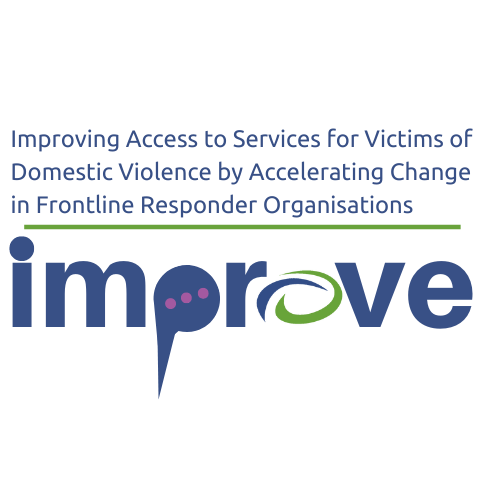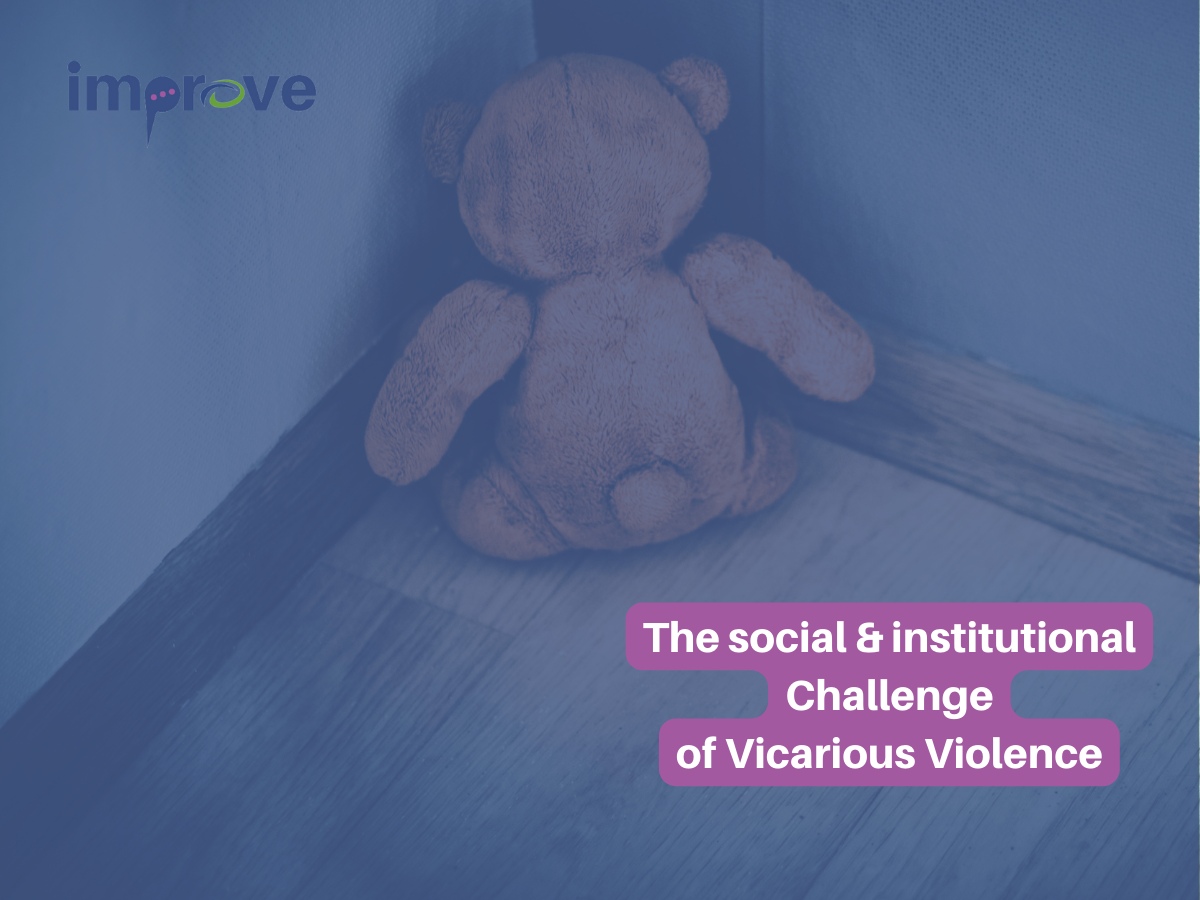2 February 2024
The social and institutional challenge of vicarious violence [1]
This blog entry explores the profound impact of vicarious violence on women victims of gender-based violence, as an instrumentalisation of children to continue perpetuating violence against women. It unravels the institutional challenges surrounding its recognition and underlines the need for social and institutional awareness. We explore how vicarious violence can be combatted and which pivotal role institutions play in shaping a violence-free future.
Gender-based violence (GBV) is one of the most significant global issues due to the impact it generates. It represents a major threat to democracy and the health and well-being of women around the world regardless of ethnicity, economic status, education, religion or profession. It becomes more alarming if we take into consideration the number of children living in violent homes and how this violence affects them (DeBoard-Lucas & Grych, 2011). In this sense, a survey carried out in Spain showed that 85 % of the children witnessed violence against their mothers and 66 % also suffered direct abuse (Patró & Limiñana, 2005).
GBV disrupts the one place children would normally feel safe: their home (Eggert, 2005). For some children, home involves vulnerability, discomfort, and direct or indirect victimisation of physical, psychological or sexual violence (Almqvist & Broberg, 2004). A home defined by GBV creates an atmosphere characterized by a parent being the perpetrator of violence while the other parent is a terrified victim, sometimes unable to support the child (Eggert, 2005) – thus, creating a detrimental home environment for the child and affecting his or her functioning and well-being (Izaguirre & Calvete, 2015).
Direct and Indirect Child Victimisation in the Context of Gender-Based Violence
It is a myth in the context of male violence that the violent behaviour of the aggressor is not a risk for the children. More specifically, GBV places children at risk for twofold victimisation: direct victimisation, when they become victims of psychological, physical, and sexual aggression themselves or when they intervene in the violent event; and indirect victimisation, when they witness their father threaten to hit or hit their mother, overhear incidents of violence from somewhere else in or outside the house, are forced to watch the violence as a lesson, experience the aftermath of the violence by seeing the bruises or other emotional scars clearly visible on their mother, or have to move to a women’s shelter (Calvete & Orue, 2011).
Children can also be victimised even when the violence is not exerted towards them, as they can be used as a physical weapon against their mother, participate in the abuse or even be injured by accident or intentionally by one parent’s physical violence (Rhodes et al., 2010).
Both victimisations can be a risk factor in children's development, as they can experience significant cognitive, behavioural, emotional, physical, psychological and social damage. Precisely, one of the repercussions that is generating the greatest social alarm is the murder of daughters or sons as one of the most extreme forms of male violence.
Vicarious Violence as Extreme Harm
It was in 2012 that the term "Vicarious Violence" began to become known (Vaccaro, 2012). Specifically, it refers to violence directed towards children with the clear intention of causing them permanent harm as well as extreme pain. Thus, the aggressor seeks to continue perpetuating violence against the woman through the instrumentalisation of the children themselves, who cease to be persons for him and become an instrument with which to harm the mother. It is, therefore, secondary violence directed solely and exclusively at the woman, as the aggressor is aware that any harm done to the children is a way of harming her directly (Vaccaro, 2021).
As the Spanish State Pact against Gender-based Violence explains, vicarious violence is "the most extreme harm that an abuser can inflict on a woman: harming and/or murdering her children" and the murder of minors is the tip of the iceberg of this type of violence. According to the Government Delegation against GBV, from 2013 – the first year for which data is available – to 2022, 49 minor children of women victims of male violence have been fatal victims of this violence.
The challenge of social and institutional awareness-raising
Vicarious violence is one of the most prevalent manifestations among women who have suffered GBV and where there is a wide margin for improvement in the care provided by institutions. This is shown by the information obtained in the interviews with female survivors of domestic violence and professionals from support services, carried out within the framework of the EU-funded research project IMPROVE (Improving Access to Services for Victims of Domestic Violence by Accelerating Change in Frontline Responder Organisations) which aims to improve access to available services through a two-pronged strategy that addresses both the needs of survivors and the difficulties of service staff in attending to them.
Despite its prevalence, vicarious violence is still difficult to identify for those who suffer it due to its still incipient social recognition. It is often only after receiving specialized therapeutic help in GBV that women come to identify the suffering they and their children experience as vicarious violence, especially in the context of legal separation and custody proceedings. Moreover, the lack of consideration of this violence, sometimes by professionals and especially by the justice system, harms the health of women and their children as they suffer stress and fear, and additionally leads to a loss of confidence in the institutions. This is especially true in the case of child joint custody between the victim and the perpetrator. Thus, the main demands for improvement of the survivors and professionals interviewed are, on the one hand, the urgency of listening to the children in evaluations and trials and, on the other hand, the training of professionals in the detection of vicarious violence in custody and family mediation processes.
Conclusions: Coping Mechanisms and External Support Insights for the Impact of Gender-Based Violence on Children
Unequivocally, children’s direct and indirect victimisation of GBV has a detrimental impact on their development and health, often leading to short and long-term behavioural, psychological, cognitive and social problems (Izaguirre & Calvete, 2016). Nevertheless, researchers have found that negative outcomes depend on the children’s ability to understand and assess the violence, the way they respond to and cope with it, and how they seek external support to obtain protection and support (Margolin & Gordis, 2000).
Combating GBV is a priority for countries all over the world. Societies have succeeded, not only in changing the public discourse regarding GBV but also in making people aware of this phenomenon. There have been many initiatives, small changes in law or increases in specialised forms of training professionals. However, GBV statistics are not falling. Despite the introduction of a range of policies and measures, it remains a serious issue and women and children continue to suffer considerable violence.
The eradication of all forms of gender-based violence requires the socialisation of present and future generations with respect for women's rights. As stated by the women and professionals interviewed within the framework of the IMPROVE project, putting an end to the socialisation of children in environments of male violence is one of the main challenges for institutions and as a society.
[1] A shorter version of this text was published in Spanish in “The Conversation” on 23 November 2023. https://theconversation.com/violencia-vicaria-las-dificultades-de-detectar-una-de-las-formas-mas-crueles-del-maltrato-a-las-mujeres-216959
Sources
Almqvist, K., & Broberg, A. (2004). Children who have witnessed abuse of their mother—a study of women and children staying at Women’s shelters in Gothenburg. Göteborgs Stad, Lundby Stadsdelsförvaltning.
Calvete, E., & Orue, I. (2011). The impact of violence exposure on aggressive behavior through social information processing in adolescents. American Journal of Orthopsychiatry, 81(1), 38-50. Doi: 10.1111/j.1939-0025.2010.01070.x
DeBoard-Lucas, R.L., & Grych, J.H. (2011). Children’s perceptions of intimate partner violence: causes, consequences, and coping. Journal of Family Violence, 26(5), 343-354. Doi: 10.1007/s10896-011-9368-2
Eggert, J. (2005). A qualitative analysis of mother-preschooler dyads exposed to trauma participating in child-parent psychotherapy. Unpublished doctoral dissertation, Alliant International University, San Francisco, California.
Izaguirre, A. and Calvete, E. (2015). Children who are exposed to intimate partner violence: Interviewing mothers to understand its impact on children. Child Abuse & Neglect, 48, 58-67. Doi: 10.1016/j.chiabu.2015.05.002.
Izaguirre, A. and Calvete, E. (2016). Exposure to family violence as a predictor of dating violence and child-to-parent aggression in Spanish adolescents. Youth & Society, 26, 1-20. Doi: 10.1177/0044118X16632138
Margolin, G., & Gordis, E.B. (2000). The effects of family and community violence on children. Annual Review of Psychology 51: 445-479.
Patró Hernández, R., & Limiñana Gras, R. M. (2005). Víctimas de violencia familiar: Consecuencias psicológicas en hijos de mujeres maltratadas.. Anales de Psicología / Annals of Psychology, 21(1), 11–17.
Rhodes, K. V., Cerulli, C., Dichter, M. E., Kothari, C. L., & Barg, F. K. (2010). “I didn’t want to put them through that”: The influence of children on victim decision-making in intimate partner violence cases. Journal of Family Violence, 25(5), 485–493.
Vaccaro, S. (2012). Violencia Vicaria: Las hijas/as que son víctimas de la Violencia para dañar a sus madres. Tribuna Feminista
Vaccaro, S. (2021). Violencia vicaria: un golpe irreversible contra las madres. Asociación de Mujeres Psicología Feminista
About the authors
Ainhoa Izaguirre Choperena is a lecturer in the Faculty of Human and Social Sciences and a researcher at the Deusto Social Values Research team, at the University of Deusto.
She holds a PhD in Social and Human Sciences with an international thesis on the impact of gender-based violence on children. She also acquired an MA in Intervention in Violence against Women, an MA in Criminology: Victimology and Delinquency, and a BA in Social Work.
Her main research interest is aimed at understanding the experiences of children whose mothers have suffered GBV, gender-based discrimination and inequalities, feminist theories and methodologies.
Her record of publications includes scholarly works on her research fields.
As a trained social worker, she has worked in a residential institution supporting teenagers under the child protection system.
Twitter: @ainho_28 & @ lorea_romero
Deusto Researchers Profile: Ainhoa Izaguirre Choperena | Lorea Romero Gutiérrez
LinkedIn: Lorea Romero Gutiérrez
Acdemia.edu: LoreaRomeroGutérrez
Lorea Romero Gutiérrez is a postdoctoral researcher at the Deusto Social Values Research Team of the University of Deusto.
She holds a PhD in Equity and Innovation in Education, with a thesis on gender studies and curricular innovation. Additionally, she has an MA in Secondary Education Teacher Training, an MA in Sexology and Gender, and a BA in Sociology.
Her main research interests include feminist theories and methodologies, the sociology of gender-based inequalities, with a special focus on education, gender-based violence, social studies of science, and youth research.
Her record of publications includes scholarly works on her research fields as well as technical-scientific reports on gender-based violence and women and men’s participation in ICT Society, for regional and state public agencies and governments. She has been also a lecturer on Sociology in degrees and masters on teacher training.



